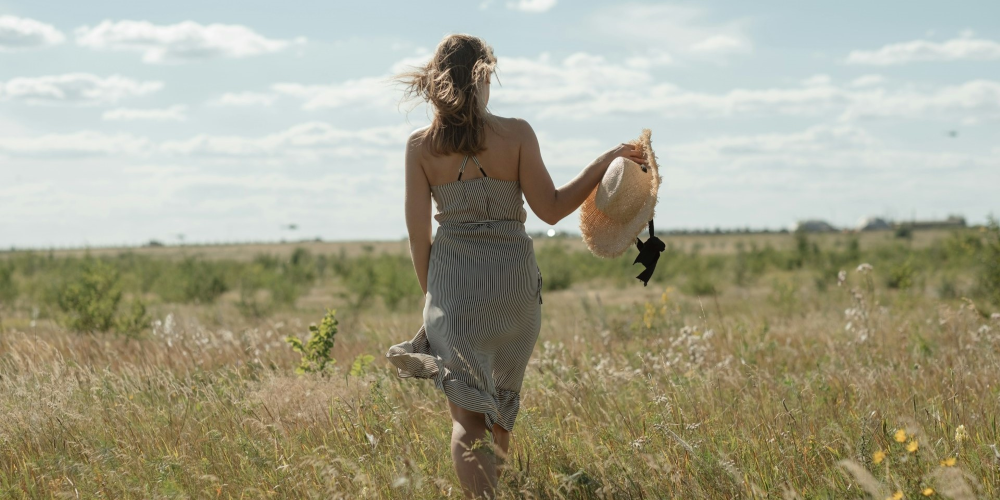The growth of vineyard-adjacent wellness retreats reflects an evolving relationship between wine country tourism and wellness-focused travel. While vineyards have long been a destination for visitors interested in wine tasting and scenic views, recent years have seen a wider range of offerings emerge alongside them. These wellness retreats, often situated near or within wine-producing landscapes, are being shaped by shifts in visitor expectations, land use planning, and broader lifestyle interests related to rest, health, and sensory experience.
Read also: Why Agri-Tourism Is Expanding Beyond Virginia Wine Country
What Contributes to the Appeal of Vineyard Settings for Wellness Travel?
Vineyards are often located in regions characterized by open space, moderate climates, and cultivated scenery. These elements can appeal to travelers seeking environments that support slower-paced or restorative experiences. In this context, wellness retreats positioned near vineyards may offer access to walking paths, quiet views, or simple accommodations that align with a preference for reflection or reconnection with nature.
While wine is still a draw for many visitors, the surrounding environment plays an increasingly central role in the types of experiences being developed. Properties adjacent to vineyards are being adapted for retreats that include yoga sessions, nature-based workshops, or multi-day programs focused on health or personal growth. The existing infrastructure and visual identity of wine-producing regions can support this shift, without requiring dramatic changes to the land or buildings.
How Are These Retreats Organized Around Vineyard Landscapes?
The structure of vineyard-adjacent retreats varies depending on location, capacity, and the goals of those managing the experience. Some are offered as periodic events—such as seasonal weekend gatherings—while others function as year-round accommodations that integrate wellness activities into their standard offerings.
Retreats may take place in renovated farmhouses, purpose-built cabins, or small clusters of lodging near the vineyard edge. Common features include spaces for group movement, access to trails or open-air platforms, and meals that incorporate local produce, often including wine in moderation. Guests are typically encouraged to engage with the setting, whether through informal walks or guided explorations of the landscape.
In many cases, the retreat content is facilitated by instructors or wellness practitioners who collaborate with property owners. Sessions might focus on movement, breathwork, creative practices, or agricultural education. While the programming often draws from a wellness framework, it is typically adapted to reflect the place and pace of rural life rather than being based on standardized spa or resort models.
What Types of Travelers Are Seeking These Experiences?
The individuals attending vineyard-adjacent wellness retreats vary, but certain patterns have emerged. Many participants express interest in combining relaxation with exploration, preferring destinations that offer beauty, simplicity, and some degree of structure. Solo travelers, couples, and small groups are common, especially among those looking to step away from digital environments or urban routines.
In some cases, guests are already familiar with wine regions but are returning for a different purpose. Rather than focusing solely on wine tasting, they may be seeking spaces that support rest, reflection, or intentional movement. Others may be new to the area and drawn by retreat programming that offers a clear beginning and end without requiring a deep familiarity with wine culture.
There is also interest from those who prioritize sustainability or local food systems. Retreats that integrate farm visits, gardening sessions, or discussions about land stewardship tend to resonate with travelers looking to understand and participate in place-based experiences.
What Distinguishes These Retreats from Traditional Wine Tourism?
While wine remains a visible feature of these landscapes, the tone and purpose of vineyard-adjacent retreats differ from standard wine tours. The emphasis is often less on consumption and more on presence—how the land feels, how the body responds to movement in nature, or how shared meals support connection.
Alcohol may be part of the experience, particularly in meals or tastings, but it is not typically the central focus. Guests may choose to partake or abstain, and offerings are usually framed in terms of sensory enjoyment rather than quantity. This positioning allows for greater inclusivity and can appeal to a broader range of travelers, including those for whom wine is secondary to the overall setting.
Activities tend to be slower-paced and grounded in seasonal rhythms. Retreats might offer early morning meditation in vineyard fields, discussions around food cultivation, or outdoor creative workshops. These offerings contrast with fast-paced itineraries or packaged entertainment often associated with commercial tourism.
How Are Vineyard Owners and Rural Hosts Approaching This Trend?
Property owners near vineyards are exploring different ways to adapt to interest in wellness travel. Some have added small lodging units or repurposed underused buildings to host short-term retreats. Others have chosen to partner with independent facilitators who coordinate logistics and programming, allowing landowners to remain focused on agricultural operations.
In some cases, wellness retreats provide a way for smaller properties to participate in regional tourism without investing in full-scale hospitality ventures. By offering occasional access to the land, they can diversify their income and share their setting with visitors in a more intentional way.
The decision to host wellness-oriented experiences often depends on zoning, insurance, infrastructure, and personal comfort with hosting. Not all vineyard-adjacent landowners are pursuing this path, but those who do often describe it as an extension of the values already embedded in land stewardship—such as care, observation, and attention to seasonality.
What Operational Considerations Shape These Experiences?
Running a wellness retreat in a rural or semi-rural setting involves careful attention to logistics. Water access, waste management, safety planning, and food sourcing all influence how these experiences are structured. Depending on the season, weather patterns and growing conditions may also shape the pace and content of each retreat.
Local regulations can affect how properties are used. Some areas allow small gatherings under specific conditions, while others require special permits or limit overnight stays. Hosts may need to navigate planning processes, coordinate with municipal staff, or engage with neighbors to ensure that the experience aligns with community values.
Staffing is another consideration. Retreats often depend on facilitators, chefs, or wellness professionals who may be hired temporarily or brought in from outside the region. Finding individuals familiar with rural hospitality and comfortable in off-grid or minimally equipped environments can be important to maintaining both quality and sustainability.
Read also: Boost Your Motivation: How to Create a Personalized Dopamenu
How Might Vineyard-Adjacent Wellness Retreats Continue to Evolve?
The future of these retreats may be shaped by how travel behaviors and land use priorities evolve. As people continue to seek meaningful time away from dense or overstimulating environments, the demand for grounded, nature-adjacent experiences may persist.
Some hosts may experiment with mobile or seasonal formats, offering retreat pop-ups during harvest or blossom periods. Others might deepen their focus on ecological education, offering programming tied to permaculture, biodiversity, or soil health. These expansions could help guests understand the role of vineyards and rural land in a wider ecological system.
Technology may play a role in coordination—through digital booking, remote facilitation, or online pre-retreat orientation—but the core experience is likely to remain analog, sensory, and location-specific. What distinguishes these retreats is their rootedness in a specific landscape and their capacity to offer quiet forms of restoration.
As landowners, facilitators, and visitors continue to engage with one another, the model may continue to adjust. While wine remains a presence, the broader story may become one of land-based well-being—one that values slowness, simplicity, and the shared rhythms of people and place.









